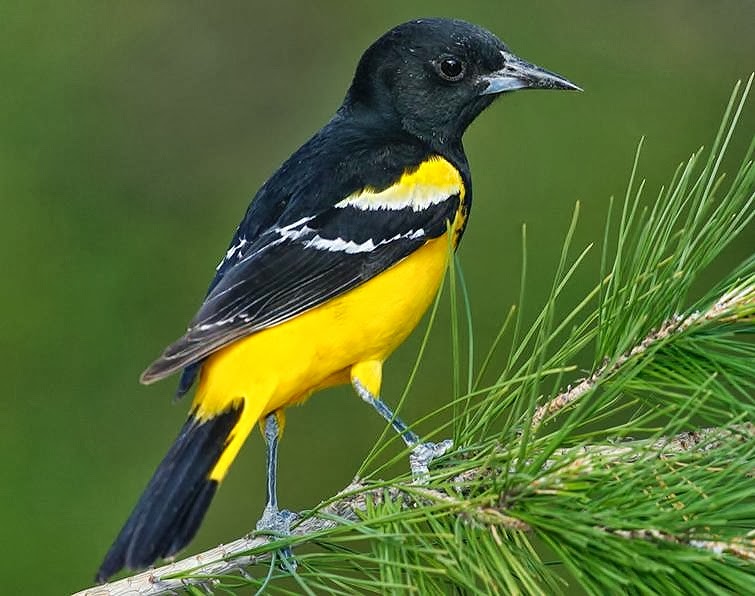 |
| Photo by Brian Small (Larkwire) |
Common name:
Scott’s oriole (en); corrupião-de-Scott (pt); oriole jaune-verdâtre (fr); turpial de Scott (es); Scott-trupial (de)
Taxonomy:
Order Passeriformes
Family Icteridae
Range:
This species breeds in Mexico an the south-western United States, as far north as Nevada, Utah and Colorado. The more northern population migrate south to winter in western and southern Mexico.
Size:
These birds are 22-24 cm long and have a wingspan of 29-32 cm. They weigh 32-41 g.
Habitat:
The Scott’s oriole is found in hot deserts and dry scrublands, especially in areas populated by yuccas. they are present from sea level up to an altitude of 3.000 m.
Diet:
They feed mainly on insects, such as grasshoppers, beetles, ants, bees, butterflies, caterpillars and other insect larvae. They also eat berries, cactus fruits and nectar.
Breeding:
Scott’s orioles breed in April-July. They are monogamous and the nest is a slightly hanging basket of woven plant fibres stripped from dead leaves, lined with soft grasses and other plant fibres. It is placed in a small trees or scrub, mainly yuccas, usually hanging from the leaves at the crown of the tree. There the female lays 3-5 pale blue eggs with dark spots and streaks, which she incubates for 12-14 days. The chicks are fed by both parents and fledge 14 days after hatching. Each pair raises 1-2 broods per year.
Conservation:
IUCN status – LC (Least Concern)
This species has a large breeding range and the global population is estimated at 1,6 million individuals. In the United States the population has undergone a small decline over the last 4 decades.







